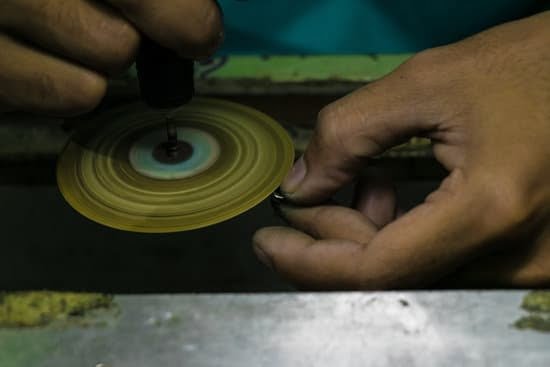Filigree jewelry has a rich and fascinating history that spans across various cultures and time periods. The delicate artistry and intricate craftsmanship of filigree pieces have captivated the hearts of jewelry enthusiasts for centuries. From its origins in ancient civilizations to its modern interpretations in today’s market, filigree jewelry continues to exude timeless beauty and enduring allure.
Tracing the roots of filigree jewelry back to ancient civilizations such as Egypt, Mesopotamia, and Greece, we uncover the beginnings of this exquisite art form. The evolution of filigree techniques throughout history reflects the development and refinement of this delicate craft, highlighting its cultural significance in different societies and time periods.
The resurgence of filigree jewelry during the Renaissance era had a profound impact on the art and fashion world, paving the way for its global influence on design and style. This article will delve into the historical significance and cultural meanings of filigree jewelry while also showcasing notable pieces that have left an indelible mark on the industry. Join us as we explore the enchanting world of filigree jewelry and appreciate its enduring legacy in the history of jewelry-making.
Origins of Filigree Jewelry
The history of filigree jewelry dates back to ancient civilizations, where the intricate art form first emerged. The origins of filigree jewelry can be traced to civilizations such as Egypt, Mesopotamia, and Greece, where early artisans developed the delicate craftsmanship that would define filigree work for centuries to come.
- Egypt: In ancient Egypt, filigree jewelry was highly valued and often used to adorn the rich and powerful. Artisans in Egypt were known for their mastery of intricate designs and fine metalwork, creating stunning pieces that showcased the beauty of filigree.
- Mesopotamia: Similarly, in Mesopotamia, skilled craftsmen were adept at creating filigree jewelry using precious metals such as gold and silver. The delicate yet durable nature of filigree made it a popular choice for creating ornate jewelry pieces.
- Greece: The Greeks also embraced filigree jewelry, using it to create elaborate adornments for both men and women. Filigree work became an integral part of Greek jewelry-making, with artisans incorporating intricate patterns and designs into their creations.
The history of filigree jewelry is a testament to the enduring artistry and craftsmanship that has been passed down through generations. From its humble beginnings in ancient civilizations to its continued popularity in modern times, filigree jewelry continues to captivate enthusiasts with its timeless beauty and cultural significance.
Evolution of Filigree Techniques
Filigree jewelry has a rich and fascinating history, with its techniques evolving and refining throughout the centuries. The history of filigree jewelry dates back to ancient civilizations such as Egypt, Mesopotamia, and Greece, where the delicate artistry of filigree work first emerged. Filigree artisans would meticulously shape and arrange fine threads of precious metals to create intricate designs, resulting in stunning pieces of jewelry that showcased their advanced craftsmanship.
As time progressed, the techniques for creating filigree jewelry continued to develop and refine. During the medieval period, filigree work reached new heights in Europe, particularly in regions renowned for their metalworking skills such as Italy and Spain. Artisans honed their craft, perfecting the art of twisting and soldering thin metal wires to form elaborate patterns and embellishments. This era saw a flourishing of filigree techniques, with jewelry becoming more ornate and detailed than ever before.
During the Renaissance era, there was a resurgence of interest in filigree jewelry, driven by advancements in metalworking tools and techniques. Filigree artisans experimented with new materials and methods, incorporating gemstones and enamel into their designs to enhance the beauty of their creations. The intricate patterns and motifs seen in Renaissance filigree pieces reflected the artistic ideals of the time, showcasing a harmonious blend of creativity and technical excellence.
The evolution of filigree techniques continued into the modern era, with contemporary jewelers drawing inspiration from historical designs while infusing their own creative interpretations. Today, filigree jewelry remains a popular choice among consumers who appreciate its timeless elegance and meticulous craftsmanship.
| Evolution of Filigree Techniques | Development |
|---|---|
| Ancient Civilizations | Emergence of delicate artistry in Egypt, Mesopotamia, & Greece |
| Medieval Period | Europan regions like Italy & Spain; elaboration & detail enhancement |
| Renaissance Era | New materials integration; experimentation; creative expressions revived |
Cultural Significance of Filigree Jewelry
Filigree jewelry has not only been an art form and fashion statement but also holds significant cultural and symbolic meanings in various societies and time periods. Throughout history, filigree jewelry has been revered for its intricate designs and delicate craftsmanship, but it has also carried deep cultural significance for different civilizations.
Ancient Civilizations
The history of filigree jewelry can be traced back to ancient civilizations such as Egypt, Mesopotamia, and Greece. In these societies, filigree was often used to create ornate pieces that held symbolic meaning. For example, in ancient Egypt, filigree jewelry was worn by the aristocracy and symbolized wealth and status.
In Mesopotamia, filigree techniques were used to create jewelry with intricate patterns that represented religious beliefs and rituals. Meanwhile, in ancient Greece, filigree jewelry adorned with symbols of gods and goddesses played a significant role in their culture.
Symbolism
In various cultures around the world, filigree jewelry has been laden with symbolism. For instance, in Hindu culture, elaborate filigree designs on jewelry represent prosperity and good fortune. In many Middle Eastern cultures, such as those in Turkey and Syria, brides have worn intricate filigree jewelry as a sign of purity on their wedding day for centuries.
Modern Interpretations
Even in modern times, the cultural significance of filigree jewelry continues to influence design choices. Contemporary artisans often incorporate traditional symbols and motifs into their filigree creations as a way to pay homage to the rich history of this art form.
Additionally, specific cultures continue to maintain their unique styles of filigree jewelry-making that have been passed down through generations. As such, understanding the cultural significance of filigree jewelry is important not only for appreciating its beauty but also for respecting its roots in different societies around the world.
Renaissance of Filigree Jewelry
The Renaissance era, spanning from the 14th to the 17th century, marked a significant period in the history of filigree jewelry. During this time, there was a revival of interest in the classical art and culture of ancient Greece and Rome, which greatly influenced the design and craftsmanship of filigree jewelry. The resurgence of filigree jewelry during the Renaissance era had a profound impact on the art and fashion world, shaping the future of jewelry-making.
The Renaissance saw a renewed emphasis on intricate detail and exquisite craftsmanship, leading to the popularity of filigree jewelry among the elite and affluent members of society. Filigree techniques were elevated to new heights during this period, with artisans mastering the art of weaving fine metal threads into elaborate designs. The use of precious metals such as gold and silver in filigree work became increasingly common, reflecting the wealth and status of those who adorned themselves with these ornate pieces.
During the Renaissance, filigree jewelry became intertwined with symbolism and allegory, often incorporating motifs inspired by classical mythology and religious iconography. These symbolic elements added depth and meaning to filigree jewelry, further enhancing its allure and desirability. The intricate patterns and delicate forms seen in filigree jewelry during this era served as a testament to human creativity and ingenuity, solidifying its place as an enduring art form within the history of jewelry-making.
- The resurgence of interest in classical antiquity during the Renaissance resulted in a fusion of artistic styles, leading to innovative approaches to filigree jewelry design.
- Filigree jewelry from this period often featured intricate depictions of natural forms such as flowers, leaves, and vines, showcasing an appreciation for the beauty of nature.
- The influence of Renaissance filigree techniques can still be seen in contemporary jewelry design, with artisans drawing inspiration from this historic period to create modern interpretations of filigree jewelry.
Global Influences on Filigree Jewelry
The history of filigree jewelry is a testament to the global influences that have shaped its design and style over the centuries. From ancient civilizations to modern interpretations, filigree jewelry has been influenced by a diverse range of cultures and regions, each leaving their unique imprint on this intricate art form.
One of the earliest origins of filigree jewelry can be traced back to ancient Egypt, where artisans used fine wires and beads to create elaborate pieces that were often adorned with precious stones. The filigree techniques developed in Egypt were later adopted and refined by other ancient civilizations such as Mesopotamia and Greece, further expanding the influence of filigree jewelry across different regions.
During the Renaissance era in Europe, there was a resurgence of interest in filigree jewelry, particularly in Italy, where skilled artisans combined traditional filigree techniques with new artistic innovations. This period saw the creation of some of the most iconic and influential filigree pieces in history, showcasing a blend of cultural influences from across Europe.
In more recent times, the globalized nature of the modern world has led to a fusion of different cultural elements in filigree jewelry design. Contemporary interpretations often feature influences from various parts of the world, creating a rich tapestry of styles that reflect the global interconnectedness of art and craftsmanship. This ongoing evolution highlights how the history of filigree jewelry continues to be shaped by diverse cultural influences, making it an enduring and dynamic art form.
| History Influences | Examples |
|---|---|
| Ancient Egypt | Filigree techniques using fine wires and beads |
| Renaissance Italy | Resurgence of interest in filigree; blend of cultural influences from across Europe |
| Modern Times | Global fusion leading to contemporary interpretations influenced by various cultures worldwide. |
Notable Filigree Jewelry Pieces
The history of filigree jewelry is rich with iconic pieces that have left an indelible mark on the industry. From ancient civilizations to modern times, these notable filigree jewelry pieces showcase the intricate artistry and delicate craftsmanship that define this timeless art form.
One such iconic piece is the Gold Lyre Pendant from the Hellenistic Period, which exemplifies the mastery of filigree techniques in ancient Greece. This exquisite pendant features intricate filigree work depicting a lyre, a symbol of music and poetry in Greek culture, and serves as a testament to the enduring legacy of filigree jewelry throughout history.
Another noteworthy piece is the Fabergé Eggs created by renowned Russian jeweler Peter Carl Fabergé in the late 19th and early 20th centuries. These ornate eggs, often adorned with intricate filigree detailing and precious gemstones, were commissioned by the Russian imperial family and have become synonymous with luxury and opulence. The Fabergé Eggs not only elevated filigree jewelry to new heights of artistry but also captured the imagination of collectors and enthusiasts around the world.
In addition to these historic masterpieces, the Art Nouveau movement of the late 19th century produced notable filigree jewelry pieces that continue to inspire contemporary designs. Artists such as René Lalique and Georges Fouquet embraced organic forms and elaborate filigree work to create stunning jewelry that reflected nature and femininity.
Their innovative use of filigree techniques contributed to a shift in aesthetic sensibilities and established a new paradigm for jewelry design. These examples illustrate how notable filigree jewelry pieces have had a lasting impact on the industry, inspiring generations of artisans and captivating enthusiasts with their timeless beauty.
As we look back at these iconic pieces from different periods in history, it becomes evident that they embody the enduring allure and significance of filigree jewelry. Their exquisite craftsmanship, symbolic meanings, and cultural influences have contributed to shaping the evolution of this art form, leaving an indelible legacy that continues to resonate in today’s market.
Modern Filigree Jewelry
In the contemporary jewelry market, filigree has regained popularity, with modern interpretations blending traditional craftsmanship with innovative design. Today, filigree jewelry is not limited to just traditional gold and silver; it can also be found in a variety of metals such as rose gold, platinum, and even stainless steel. This modern twist on filigree allows for a wider range of options for consumers, catering to different styles and preferences.
In addition to the use of different metals, modern filigree jewelry also incorporates gemstones and colored enamel to add a pop of color and vibrancy to the intricate designs. By incorporating these elements, contemporary filigree pieces are able to appeal to a wider audience and adapt to current fashion trends while still maintaining the timeless elegance that is characteristic of filigree jewelry.
Filigree jewelry has gained recognition among both designers and consumers for its unique blend of vintage charm and modern sensibilities. Its popularity can be attributed to its versatility – it can be worn casually or for formal occasions – as well as its ability to stand out amidst mass-produced accessories. As more people seek out distinctive and artisanal pieces, the demand for high-quality filigree jewelry continues to grow.
Additionally, online platforms have played a significant role in promoting and selling modern filigree jewelry. With e-commerce sites and social media platforms showcasing the work of independent artisans and established brands alike, consumers have greater access to a wide assortment of contemporary filigree designs from around the world. This global reach has further contributed to the resurgence in popularity of this historical art form.
Environmental Sustainability in Modern Filigree
One notable trend within modern filigree jewelry is an increased emphasis on environmental sustainability. Artisans are now using recycled metals and responsibly-sourced gemstones in their creations, aligning with the growing eco-conscious mindset prevalent in today’s society. This commitment not only reflects ethical practices but also adds another layer of value to these exquisite pieces for environmentally-conscious consumers.
Conclusion
In conclusion, the history of filigree jewelry is a rich tapestry of intricate artistry and delicate craftsmanship that has spanned centuries and crossed continents. From its origins in ancient civilizations such as Egypt, Mesopotamia, and Greece to its resurgence during the Renaissance era, filigree jewelry has held a significant cultural and artistic significance throughout history.
The evolution of filigree techniques has seen the refinement and development of this intricate art form, while global influences have shaped the design and style of filigree jewelry in different regions.
The enduring allure and timeless beauty of filigree jewelry continue to captivate modern jewelry enthusiasts, with contemporary interpretations maintaining its popularity in today’s market. Notable filigree jewelry pieces from different time periods have left an indelible mark on the industry, showcasing the skill and creativity of artisans throughout history.
As we reflect on the cultural significance and symbolic meanings associated with filigree jewelry in different societies and time periods, it becomes evident that this art form has transcended generations, leaving a lasting impact on the world of jewelry-making.
In essence, the history of filigree jewelry serves as a testament to human creativity, ingenuity, and craftsmanship. Its delicate beauty and intricate designs have stood the test of time, making it a timeless symbol of elegance and sophistication. As we continue to appreciate and celebrate the enduring allure of filigree jewelry, we honor not only its rich heritage but also the talented artisans who have contributed to its legacy throughout history.
Frequently Asked Questions
Where Did the Filigree Technique Come From?
The filigree technique originated in the ancient civilizations of Mesopotamia and Egypt, where it was used to create intricate jewelry and metalwork. Over time, the technique spread to other regions, including Asia and Europe.
What Is the Meaning of Filigree Pattern?
The filigree pattern is characterized by delicate, intricate designs created from fine threads or beads of metal. It often features swirling, geometric, or floral motifs that are meticulously crafted to form a lacy appearance. This technique requires a high level of skill and precision.
Where Did Silver Filigree Work Originate?
Silver filigree work has its origins in various cultures around the world, including India, Greece, and China. Each culture has its unique style and approach to silver filigree work, incorporating local designs and motifs into the intricate jewelry and decorative pieces created using this technique. Silver filigree work remains a significant aspect of these cultures’ artistic heritage and craftsmanship.

Welcome to my jewelry blog! My name is Sarah and I am the owner of this blog.
I love making jewelry and sharing my creations with others.
So whether you’re someone who loves wearing jewelry yourself or simply enjoys learning about it, be sure to check out my blog for insightful posts on everything related to this exciting topic!





